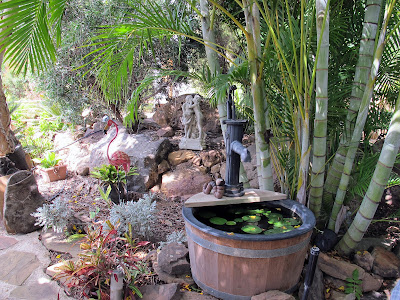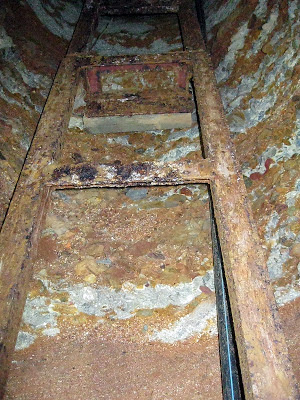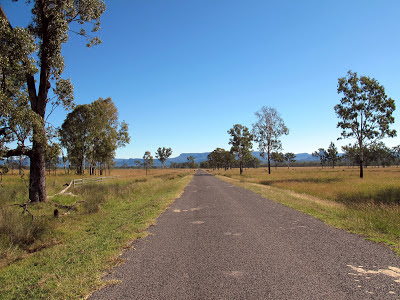We knew that we were not going far so I let the van amble along peacefully while we reflected on the past five days and then began to wonder what we would do next. Rolleston was a mere 100km along the way and it was there that we refueled the van and then decided to see if the pub there had coffee. It did. I am unused to pubs but this one felt very odd with the bar person very tense and constantly telling every one, most of whom were travellers like ourselves, that s/he was very stressed and having a really bad day. When we decided to order some food we were told that we should ask the chef if he was willing to take an order, so, after some time I found him in a cupboard in the kitchen and approached him very cautiously with my request. "No Prob!" was the answer. "Ready in fifteen."
Emerald was 140 km from Rolleston and on arrival we called in at the supermarket to replenish our groceries. Our arrival there had my phone going crazy with a week's worth of messages beeping in, only one of them really important. We then found a great Information Centre where we made the decision not to stay at Emerald but to visit the sapphire mining precinct around Sapphire 53 km further along the way
As we ambled happily along the Capricorn Highway we spotted this intriguing weather event which we calculated was very near to Sapphire. It looked like a waterspout such as those we saw in Montana however we later saw no signs of any precipitation.
 |
| Railway station, Anarkie |
 |
| Sapphire |
After a quick look around we continued to Rubyvale, a mere 7km down the road where we found a pleasant caravan and camping park, set up camp and enjoyed a quick dinner of pork curry, chick pea curry and salad accompanied of course by a cool chardonnay.
 |
| Muggachino's Strudel Hill, Rubyvale |
After drooling over the big range of these colourful gemstones we were in need of a coffee and remembered the newly opened cafe which had been recommended to us by the Emerald Information Centre volunteers. We found it on Keilambete Road behind another gem shop and thankfully, it was open. What a cute place it was! The lady left the gem shop [unsecured, I noticed] and came to the back courtyard to brew fresh coffee and to serve us apple strudel and freshly baked scones. She then stayed to have a chat with us about local sapphires as well as sapphires they get from other countries, including Sri Lanka.
Fortified we then decided to take a drive around the gem fields and this is what we saw . . .
 |
| Final process of sapphire mining - getting the sapphires from the wash |
So, Sunday was a day of enforced rest. Watched by our kookaburra, we finished it off with kangaroo stew, rice, beans, carrots and a glass or two of red wine.
| Kookaburra |
Shafts are dug out first as they provide the vital air source and also an outlet for the wash which has to be rocked, rolled, smashed washed and sieved to catch the hidden sapphires. These shafts go down only until they hit granite beds - the line of wash sits on top of these beds.
At the bottom of the steps we stopped to learn that we were in "Monkey Drive" the tunnel section of this mine which was dug by hand shovel around 1906. It had been worked then by two men, one worked underground while his partner winched the buckets of wash up to the top and also kept a look out to check that the man underground was safe. The underground toiler would really need to be able to trust his partner on the top, I thought.
 |
| Underground tunnel, Sapphire mine at Rubyvale |
 |
| There's a couple of sapphires in them rocks! |
The present company worked this mine in 1982 and opened the tour a few years later after moving their active mining a little further along the property.
 |
| Looking up the mine shaft |
 |
| Hand mining - jack hammer |
The ladder below was one used a hundred years ago.
Once the tour was finished we again browsed the shop and succumbed to the temptation, buying a couple of necklaces for our daughters.
Then we were on the road again, retracing our path as far as Emerald, heading to Emu Park on the coast.

































